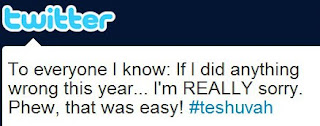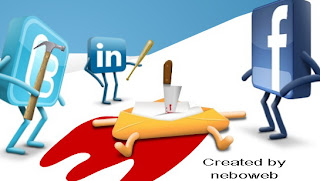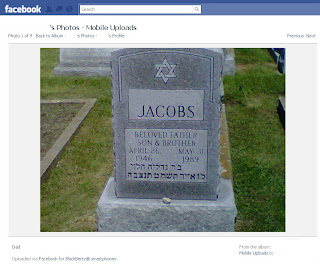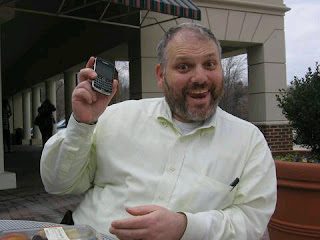This past Sunday, the president of New York University issued a mass e-mail apology to students and staff. The day after Yom Kippur might sound like a sensible day for issuing apologies, but the question is whether John Sexton actually needed to make a Mea Culpa.
You see, this official apology to the entire university community was for sending an earlier mass e-mail (the university president’s academic year report) on Friday evening when Jewish students were already observing Yom Kippur at Kol Nidrei services. Apparently, the report was supposed to be sent during the day on Friday (before the advent of the holiday), but it was delayed due to technical problems.
While it’s nice that the university president issued this apology before any complaints were even made, I’m not sure how an e-mail coming into one’s inbox on the Day of Atonement is offensive. Personally, I abstain from using my computer or phone (and thus no e-mail) on Shabbat and Jewish holidays, but I’m not offended if messages reach my account during these times.
I don’t think Jewish institutions should send official e-mail messages on Shabbat and holidays, but of course it depends on the type of Jewish organization. A reform temple sending a reminder via e-mail to its membership on Saturday afternoon about a program that evening might not be considered unseemly, but a JCC or Jewish federation releasing a broadcast e-mail message in the middle of Shabbat would be tacky, raising eyebrows and drawing complaints. NYU, a secular institution, shouldn’t worry about sending e-mail messages to the student body on Jewish holidays. Jewish students at NYU were legitimately angered that the second day of classes were held on Rosh Hashanah, but the president’s e-mail message reaching the inbox once Yom Kippur began is not an egregious act. Sexton’s apology is just an example of political correctness gone too far.
There are certainly times when technology and Shabbat or Jewish holidays collide. In some cases, a tactful conversation is necessary. For instance, leaders in my synagogue might send each other casual e-mail messages on Shabbat and Jewish holidays regarding congregational matters. But it is only when a leader sends an e-mail to the entire congregation that it is problematic. True, no one is being forced to turn on their computer and log-in to their e-mail account to read it on Shabbat or a holiday, but it gives the impression that official synagogue business is being conducted on these days and that’s an impression I don’t want to give.
There are other times when technology seems to collide with Shabbat, but without that intention and the benefit of the doubt should be granted. Here are two examples to demonstrate my point:
1) For several years my Facebook account was set up to automatically upload this blog’s RSS feed onto my Facebook page. This process often took a few hours after I published a blog post. So, on one occasion I posted to my blog at around 4:00 p.m. on a Friday afternoon. The blog post wasn’t fed onto my Facebook account until later that evening, after Shabbat began. The following Monday, I received a finger-wagging message through Facebook from a member of my local Jewish community. She commended me on my interesting blog, but questioned how I, as a rabbi and role-model in the community, could publish a blog post on Shabbat.
Even after explaining to her that the actual post was published well before the onset of Shabbat, but that it didn’t posted to my Facebook profile until several hours later, she chastised me for not taking that into account when I originally posted to my blog. I was immediately reminded that certain activities are prohibited even before Shabbat commences lest others think that you have transgressed the laws of Shabbat (i.e, one may not put wheat into the watermill unless there is enough time for it to be ground before the onset of Shabbat).
2) I am an avid user of Constant Contact, the Web based e-mail newsletter marketing application, and I used to send a weekly newsletter to my subscribers on Friday afternoon. On one particular Friday, the site experienced a maintenance problem and it didn’t send the newsletter until Saturday morning. I discovered that the newsletter wasn’t disseminated until Saturday morning when I checked my e-mail following Shabbat. Of all the subscribers, I received only one irate message from an individual who complained that I sent the newsletter during Shabbat. The irony is that he sent his chastising message to me on Shabbat afternoon. I replied with the explanation that Constant Contact experienced maintenance problems, he he responded, “I figured it was something like that. Sorry. And I guess I shouldn’t have responded on Shabbat anyway!”
So, sometimes it’s important to give people the benefit of the doubt when technology and Shabbat collide. Before jumping to conclusions, it’s possible that the message sent to your discussion group on Shabbat was actually sent by someone in Israel where Shabbat had already ended in that timezone. Maybe that message from the Jewish federation’s CEO to the entire community was scheduled before the holiday, but it got delayed in Cyberspace.
And if you’re a college student at NYU who returned home after breaking the fast Saturday night to find that an e-mail message from your university president had been waiting for you in your inbox since Friday night… let it go. Your e-mail account’s Sabbath observance hasn’t been compromised.









